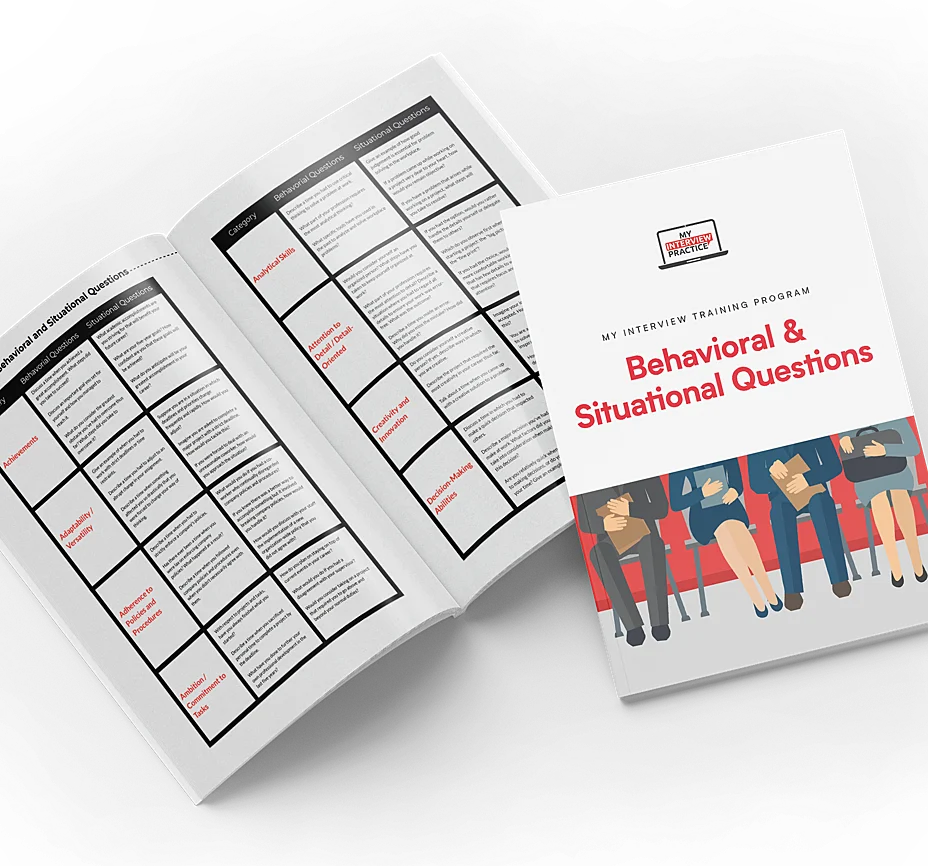 BACK
BACK
Aeronautical Engineer Interview Questions
Position Summary
Aeronautical engineers, sometimes referred to as aerospace engineers, work in the aerospace, aviation, and defense industries. They work on a variety of projects that range from aircrafts such as passenger jets, helicopters, fighter planes, and space shuttles to machinery such as satellites, missiles, and weapons systems. Their work consists of designing, developing, researching, and testing complex engineering solutions.
Aeronautical engineers will often specialize in a certain field due to the level of expertise needed to work in any single field. They work alongside other engineers to develop electrical, structural, computer-software, and propulsion systems.
Responsibilities
Aeronautical engineer responsibilities may include:
- Performing theoretical and practical research
- Providing consultation and troubleshooting services
- Assembling and preparing aircraft for flight
- Writing reports and manuals
- Assessing budget and timelines with potential clients and supervisors
Skills
Aeronautical engineers are responsible for the design of an airplane. In order to design a solid aircraft that will safely transport passengers and cargo, a skilled aeronautical engineer will:
- Have a keen eye for detail in order to ensure all aircraft is designed according to benchmark standards
- Communicate clearly with their team and clients as needed
- Be able to work long hours in mentally demanding environments
- Have an expert knowledge in both the theory and practical application of mechanics
- Have a strong commitment to approved safety standards
Qualifications
Aeronautical engineers are entrusted with the important task of designing aircraft that will safely transport passengers and cargo. As such, candidates are typically expected to have a Master of Engineering at the bare minimum, although there are many engineers who have doctorates.
In addition, prior work experience in an apprenticeship or as an intern is typically required. Candidates can expect to be thoroughly vetted and willing to commit to a lifetime of higher education as technology advances and the field expands.
If you’re getting ready to interview for a position as an aeronautical engineer, you can prepare by researching the company as much as possible. Learn about the 9 things you should research before an interview.
Salary
Salaries for aeronautical engineers range between $67K and $93K with the median being $82K.
Factors impacting the salary you receive as an aeronautical engineer include:
- Degrees (bachelor's, master's, doctorate, etc.)
- Years of Experience
- Location
- Reporting Structure (seniority of the manager you report to, number of direct reports)
- Level of Performance - exceeding expectations
Aeronautical Engineer Interview Questions
Question: How are the theories of aerodynamics used in the aeronautical engineering field?
Explanation: The interviewer is asking this general question early in the interview to begin the conversation and get you talking. They also use the information you provide in response to the question as guidelines for other questions they will ask.
Example: “Aerodynamics deals with the theory of airflow and therefore has many applications in the field of aeronautical engineering. Aerodynamic theory can predict the forces acting on the surfaces of aircraft such as lift, sheer, thrust, and resistance. The theories also address heat transfer and airflow through the interior of the aircraft.”
Question: Can you describe some of the lift augmentation devices used on an aircraft?
Explanation: This is a general question the interviewer is asking to understand the depth of your knowledge of aircraft design. General questions are normally asked early in the interview. You can use your answers to these questions to guide the interview in a direction you are comfortable discussing.
Example: "There are several different types of lift augmentation devices present on most modern-day aircraft. These are commonly known as flaps which are movable portions of the wings. They can be located on either the front or the rear sections of the wing and can either be fixed or retractable. Trailing edge flaps reduce the airflow over the top of the wing. Leading-edge flaps help increase the camber of the wing. Flaps are generally used only during low-speed flight, such as takeoffs and landings."
Question: What are the functions performed by the rudder on an aircraft?
Explanation: This is yet another general question used by the interviewer to understand your general knowledge and experience in designing aircraft. As the interview progresses, you will see fewer general questions and more operational and technical questions.
Example: “The rudder on the aircraft has several purposes. First, it provides latitudinal stability and helps the aircraft fly straight. It also provides some limited assistance in turning the aircraft. Finally, it will reduce the possibility of an aircraft spinning and help it recover from a spin once it enters one. On smaller aircraft, the rudder is also used to help steer the aircraft while it is on the ground.”
Question: What are the forces involved in calculating the effects of aerodynamics on an aircraft?
Explanation: This is an example of a technical question. As an aeronautical engineer, you can anticipate that the majority of your interview will involve technical questions. The best way to answer these is straightforwardly with little embellishment. The interviewer will ask you follow-up questions if they need additional details.
Example: “There are two main forces used in calculations involving aerodynamics. These are pressure distribution and shear stress distribution. Pressure distribution acts over the entire surface of the aircraft in a perpendicular direction. Shear stress distribution is a pressure that acts longitudinally. Engineers use these forces to design aircraft that will travel efficiently through the air which acts as a fluid.”
Question: What design features do you use to optimize the performance of the aircraft flying at high altitudes and fast speeds, such as airliners?
Explanation: This is an operational question which the interviewer will ask to gain some understanding of how you go about solving problems or designing aircraft. Operational questions are best answered by providing a step-by-step explanation of the process you use.
Example: “There are various steps required to solve the problems of aircraft flying at high altitudes and very fast speeds. These include making the wings extra stiff so they will resist torsional diversion, including two sets of ailerons for both high- and low-speed flight, and designing in spoilers that can be positioned independently or paired with the ailerons."
Question: What are the different categories of an aircraft’s speed or Mach number?
Explanation: This technical question will help the interviewer understand your engineering knowledge and ability to solve problems involving complex calculations. As mentioned earlier, you should expect a great many technical questions during the interview. You can use this guide to help you prepare for these. When practicing your answers, do it out loud to create muscle memory and sound more natural during the interview.
Example: "There are four different types of speeds of an aircraft, and each can be identified using a Mach number. First, you have to understand that Mach 1 represents the speed of sound. Subsonic speeds or less the mach one and are fairly consistent. Transonic speeds span Mach 1. Supersonic speeds are greater than Mach 1 and create shock waves that are sometimes heard on the ground. Finally, hypersonic speeds are the high end of the supersonic range. At these speeds, the sonic shock waves occur closer to the body of the aircraft and increase the heat of the skin of the aircraft."
Question: What are the mechanical properties used when designing an aircraft?
Explanation: This is yet another technical question. By now, you should be recognizing the difference between general, operational, and technical questions and answering them appropriately using the suggestions provided. By practicing these questions out loud, it will become easier for you to perform well during the interview.
Example: "The key mechanical properties used in the design of an aircraft include strength which is the ability of a material to withstand pressure before fracturing, stress which measures the load on a material, tensile stress which is the material's ability to stretch before rupturing, specific strength which is used to calculate the material's ability to carry a load, malleability which defines the material's ability to be formed, and elasticity which is the material’s ability to return to its original shape once it is deformed."
Question: Can you describe the two major categories of aircraft maintenance and how they are used?
Explanation: Even though this question does not involve the design of an aircraft, aeronautical engineers need to be aware of how the aircraft is maintained to help write maintenance manuals and create the steps needed to maintain an aircraft.
Example: “The two major categories involved in aircraft maintenance and used by certified technicians in field maintenance are mechanical and avionics. The mechanical aspects of an aircraft involve the working of the airframe, engine, electrical power systems, and equipment. It also requires knowledge of aircraft structures and materials. The avionics category deals with the aircraft’s flight instruments and radar-related systems.”
Question: What are the different types of stress that need to be accounted for when designing an aircraft?
Explanation: You probably already recognize this as a technical question. As a reminder, answer this question straightforwardly with little embellishment. The interviewer will ask a follow-up question if they need additional information.
Example: “In general, stress is defined as a force acting on a material. It is measured in weight per unit area. The different types of stress involved in aircraft design include tensile stress which is trying to pull the material apart, compressive stress which is trying to crush the material, and shear stress which is the force air has on the aircraft and can result in failure of the materials or the seams.”
Question: Why must strain be accounted for in the design of an aircraft?
Explanation: This is another technical question in which the interviewer wants to ensure that you know all the factors involved in the design of an aircraft. Aircraft design is an extremely complicated science. Additionally, the products you are working on are extremely expensive, and the design cycles are very long. Organizations involved in aircraft design need to make sure the engineers they hire are extremely qualified. Answering these types of questions accurately will provide them this assurance.
Example: “Strain is what occurs when a material is acted upon by an outside force resulting in its shape being altered. In aircraft, the body of the plane is strained both internally and externally in a variety of directions. Aeronautical engineers need to account for these forces, especially when they combine to produce a different type of strain. The types of strain are analogous to the three types of stress - tensile, compressive, and shear strain.”
Additional Aeronautical Engineer Interview Questions
-
Can you explain what you know about the testing done in aerospace engineering?
-
Have you ever had to create your own tool in MS Excel, CAD, etc., to solve a problem?
-
What are the main areas in aviation?
-
Have you ever had an issue with software that you couldn’t figure out yourself?
-
Are you able to work under strict deadlines and have an organized workspace?
-
What are the main objectives of aerodynamics?
A word of warning when using question lists.
Question lists offer a convenient way to start practicing for your interview. Unfortunately, they do little to recreate actual interview pressure. In a real interview you’ll never know what’s coming, and that’s what makes interviews so stressful.
Go beyond question lists using interview simulators.
With interview simulators, you can take realistic mock interviews on your own, from anywhere.
My Interview Practice offers a simulator that generates unique questions each time you practice, so you’ll never see what’s coming. There are questions for over 120 job titles, and each question is curated by actual industry professionals. You can take as many interviews as you need to, in order to build confidence.
| List of Questions |
In-Person Mock Interview |
My Interview Practice Simulator |
|
|---|---|---|---|
| Questions Unknown Like Real Interviews | |||
| Curated Questions Chosen Just for You | |||
| No Research Required | |||
| Share Your Practice Interview | |||
| Do It Yourself | |||
| Go At Your Own Pace | |||
| Approachable |
The My Interview Practice simulator uses video to record your interview, so you feel pressure while practicing, and can see exactly how you came across after you’re done. You can even share your recorded responses with anyone to get valuable feedback.
Check out My Interview Practice
Positions you may be interested in
The better way to practice interviewing.
Simulate realistic interviews for over 120 job different titles, with curated questions from real employers.
Learn More
Get the free training guide.
See the most common questions in every category assessed by employers and be ready for anything.
Get the Guide




